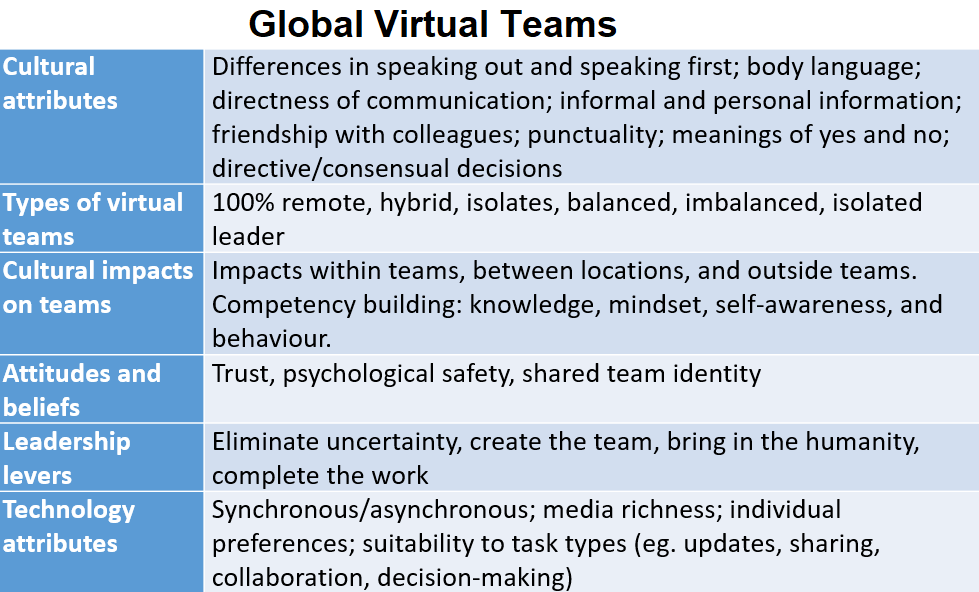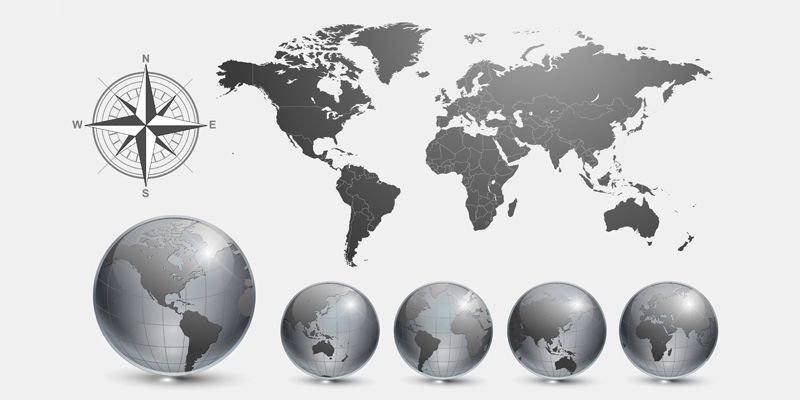Launched in 2012, YourStory's Book Review section features over 310 titles on creativity, innovation, entrepreneurship, and digital transformation. See also our related columns The Turning Point, Techie Tuesdays, and Storybites.
How do cultural diversity, geographic distance, and technology impact how people think, feel and act when leading and working in virtual teams? This is the core question explored in the book, Virtual Teams Across Cultures: Create Successful Teams Around the World by Theresa Sigillito Hollema.
The pandemic has accelerated the practice of remote work, and many valuable lessons have been amplified on how to manage global virtual teams. Successful teams exhibit intercultural competence, online collaboration skills, and virtual leadership.
Theresa Sigillito Hollema has worked with global teams for over 25 years. She leads the team at InterAct Global, helping organisations capitalise on cultural diversity and virtual connections. A graduate of the University of Michigan, she is now based in the Netherlands.
The material draws on 150 academic articles and interviews with more than 40 business leaders. Here are my key takeaways from this insightful 200-page book, summarised as well in the table below. See also my reviews of the related books Rebel Talent, Multipliers, Social Chemistry, Digital Open Innovation, and Pandemic, Inc.

(Image credit: YourStory)
Foundations
Theresa categorises virtual teams into different types, depending on the degree of virtualisation and distribution. They include 100 percent remote team (different locations), hybrid (local subgroups), isolates (only core in one location), balanced (equally distributed), imbalanced (majority in one location), and isolated team leader.
Team members who are separate from the larger group often feel ignored, less informed, and inconvenienced, she cautions. Other challenges that can arise in virtual settings are misunderstandings, perceptions of favouritism, and drift.
Standardising processes and tools are not enough – leaders should also bring out and harness cultural differences. It is important to encourage diversity and inclusion and go beyond cultural stereotypes, Theresa adds.
“Co-located blindness” refers to team members’ preference for the opinions and actions of their own co-located colleagues. This poses challenges for hybrid virtual teams because of the formation of local subgroups, Theresa cautions.
To deal with these challenges and tap the power of virtual work, the author has developed a framework called CALDO. It is based on interacting components of cultural diversity, attitudes, leadership, distance work tools, and outcomes.

Collaboration across cultures
Much work has already been published on intercultural team dynamics, cultural sensitivity, and global work. Cited books include Riding the Waves of Culture (Fons Trompenaars and Charles Hampden-Turner), Culture and Organisations (Geert Hofstede), and The Culture Map (Erin Meyer).
Each culture has developed its own assumptions about appropriate behaviours, norms, and values. Some attributes are visible, others are implicit. Cultural competency involves understanding, respecting, and working with these differences, and there are often no universal ‘right’ or ‘wrong’ ways.
Lack of understanding these cultural differences can lead to surprise, frustration, anger, misunderstanding, or uncertainty, Theresa cautions. “Cultural diversity can be a pleasure and a challenge,” she observes.
At times of pressure like tight deadlines, employees may slip back to their own cultural comfort zones and communities.
“On the other hand, culturally diverse teams have a creative potential that may be lacking in culturally homogeneous teams,” Theresa explains.
Leaders who bring out and capitalise on cultural diversity rather than flattening them out make team members feel more valued and respected. They acknowledge the benefits of cross-pollination of ideas, and invest time and energy to understand and harness them, Theresa writes. “Cultural bridge” roles can be played by competent team members as well.

Cultural impacts
Cultural diversity impacts global virtual teams at three levels – within teams, between locations, and outside the team in a broader social context.
Communication differences within teams arise due to cultural variations, such as low-context (the words are enough to convey the meaning) and high-context (contextual cues are needed for better understanding).
The ability to recognise, respect, and reconcile the differences of diversity makes the team stronger, according to Fons Trompenaars.
Some cultures prefer to work only on task orientation, and are protective of their private time. In “diffuse cultures,” the interactions involve personal contexts as well, not just work. In some cultures, leaders are directive, in others, they are more of facilitators and coaches, Theresa observes.
“Hybrid virtual teams are the most challenging configuration because of the potential formation of subgroups by location, and often by culture,” she cautions.
Personal activities like recreation and leisure differ across cultures as well, outside the team context. These can also be tapped to build stronger understanding, appreciation, and bonding, Theresa advises.
She defines cultural competence through four elements: knowledge, mindset, self-awareness, and behaviour. It involves reading about cultures, being humble and curious, and practising how to deal with misunderstanding and conflict.
Even with all this preparation, leaders need to be adaptive, and adjust to emergent phenomena. In virtual settings, developing cultural competence calls for extra research, dialogues, training, and reflective activities.
“Global collaborations provide a rich opportunity for learning and personal development,” Theresa enthuses.

Attitudes and beliefs
Trust, psychological safety, and shared team identity are three core foundations for success in global virtual teams.
Theresa describes three types of trust in teams: relationship, capability, and reliability trust. “Virtual teams begin with swift trust, quickly replace this with capability trust when they work together and over time build relationship and reliability trust,” she observes.
Professional trust is gauged through a combination of degrees, qualifications, and certified skills. These vary across countries and may thus be hard to assess for some members in cross-cultural teams.
“When team members trust each other, they will share information, cover for each other, resolve conflicts more easily, ask for help, and have an open approach with the team,” Theresa observes.
Team members often look for signs of trust in their team leader, particularly those who are far away. Leaders thus need to work extra hard to build trustworthiness through empathy, fairness, storytelling, and being accessible in a timely manner.
Amy Edmundson defines psychological safety as “the perceptions of the consequences of taking interpersonal risks in a particular context such as a workplace.”
Team members should feel that they can share their opinions, ask questions, and contribute ideas without the risk of embarrassment, loss of face, or disrespect, Theresa emphasises.
Conflicts can arise from personality differences, communication patterns and disagreements on task objectives. Psychology safety can help by improving information sharing, team learning, decision quality, and innovation.
Psychological safety does not mean avoiding confrontation or disagreements, Theresa clarifies. On the contrary, disagreements are encouraged, mistakes are discussed and analysed, and failure is seen as a chance to learn. Ways to enhance such safety include giving equal speaking time, encouraging diverse viewpoints, and avoiding blame.
“Shared team identity minimises conflict,” Theresa explains. “Shared team identity plays an important function on a high-performance team,” she adds.
Team purpose, goals and norms should be clearly spelt out, and team names and symbols can also be deployed. Individual and team successes should be celebrated, as well as personal occasions like birthdays.
Leaders need to work extra hard on team-building activities in the virtual world, where hallway meetings and impromptu meals or coffee are not possible.

Leadership levers
Theresa describes four leadership levers in the CALDO model: eliminate uncertainty, create the team, bring in humanity, and complete the work.
To eliminate uncertainty, leaders must clearly specify team purpose, structure, processes, time commitment, and feedback channels. Leaders need to show agility in the face of uncertainty, and be catalytic rather than heroic. They need to balance assertive and accommodative styles, Theresa advises.
Depending on workflow and interactions, Professors Bell and Kozlowski describe four types of virtual teams: pooled, sequential, reciprocal, and integrated. A team of consultants may work independently, whereas a virtual software development team needs to work tightly together.
Knowledge management plays a key role in global virtual teams by creating a “team memory system.” It should specify individual strengths, ability to request and offer advice, and share updates. Team members should be encouraged and rewarded to help each other, Theresa advises.
She describes a range of team-building exercises, such as storytelling, online games, virtual office tours, and attending an online course together. Social icebreakers can include describing news updates or even local views outside the window.
Focusing on the human side includes showing empathy even across distances. For example, leaders may notice stress in employees via changes in their communication styles or tones, and should call them directly to express concern and offer help.
Leaders should empower others, and actively facilitate their development. They should show employees appreciation, and give them the experience of intellectual stimulation, motivation and engagement.

“Global working invites us to be present 24/7, but we need to decline the invitation,” Theresa cautions. Expectations should be set on time off and personal care time.
Leaders should spend extra time explaining decisions so that people feel their points of view have been acknowledged. “In virtual teams, the perception of fairness is even more necessary,” Theresa affirms.
Regular online contact can even create “perceived closeness” and improve the quality of the working relationship. Team members will need to shift preferred times of some meetings to accommodate those in other time zones.
Practices of inclusion encourage open conversations and perspective sharing. Meetings should be improved by effective summarisation and note-taking.
“Perspective-taking is an advantageous way to shine a spotlight on the assumptions that drive our points of view and behaviours,” Theresa explains.
“Virtual leaders recognise that micromanagement is obsolete and entirely ineffective in the new landscape. Instead, successful virtual leaders develop their style to empower, clearly define deliverables, and support the employees,” Theresa explains.
Virtual leaders work extra hard to create connections, clarify messages and processes, and encourage collaboration online. In effective teams, the members themselves step up to take on more responsibilities and offer creative suggestions.

Digital workflow
The fourth leadership lever involves workflow – process standardisation, team rhythm, and task-technology fit. In the virtual world, individuals have developed their own communication styles (e.g. mix of informal and formal topics) and tool preferences (e.g. email, chat or video calls).
Tasks that require more collaboration call for more synchronous communication. Multicultural teams can select asynchronous tools to reduce the cognitive load of communication in a second language, Theresa describes.
“As much as technology enables virtual teams, subtle nuances of communication that would normally build trust are lost in emails and phone calls,” Theresa cautions. Context and combinations are also key – some people find follow-up confirmation acceptable via email or WhatsApp after a video call.
“Time zone differences are the bane of a virtual team,” Theresa observes, though sometimes there are unintended benefits as well. With planning and asynchronous tools, teams can still communicate and collaborate effectively together, she adds.
“Use and jam-pack the overlapping working hours,” Theresa advises. They are ideal for quick responses, full-attendance meetings, and simultaneous coworking.

The road ahead
“The need for knowledgeable, reflective and effective virtual leadership is essential in today’s globalised economy,” Theresa sums up. Success in global virtual teams calls for being caring, curious, creative, inclusive, supportive, and digitally skilled.
While this book focuses largely on virtual work within an organisation, it opens the door to further research on virtual work between organisations and in globally dispersed communities of independent professionals.
Leaders and teams need to continually learn and improve their knowledge, attitude, and competencies in global virtual work. Success is built on mindset and skillsets, not just toolsets.
“Successful virtual leaders have the knowledge, competence, and mindset to lead multicultural virtual teams,” Theresa signs off.
YourStory has also published the pocketbook ‘Proverbs and Quotes for Entrepreneurs: A World of Inspiration for Startups’ as a creative and motivational guide for innovators (downloadable as apps here: Apple, Android).
Edited by Saheli Sen Gupta
Link : https://yourstory.com/2021/07/global-virtual-teams-book-review
Author :- Madanmohan Rao ( )
July 31, 2021 at 02:52PM
YourStory






